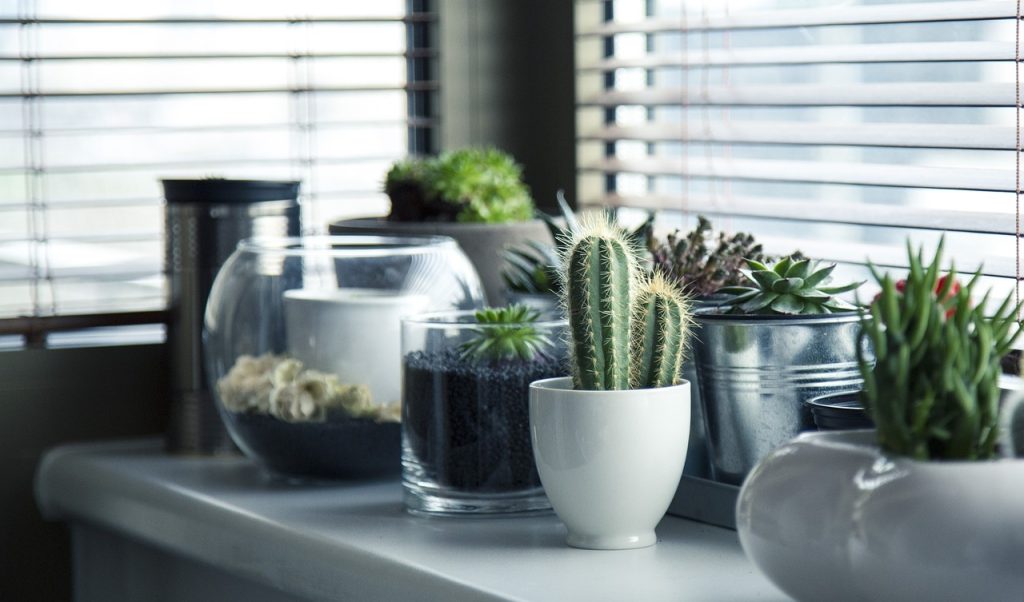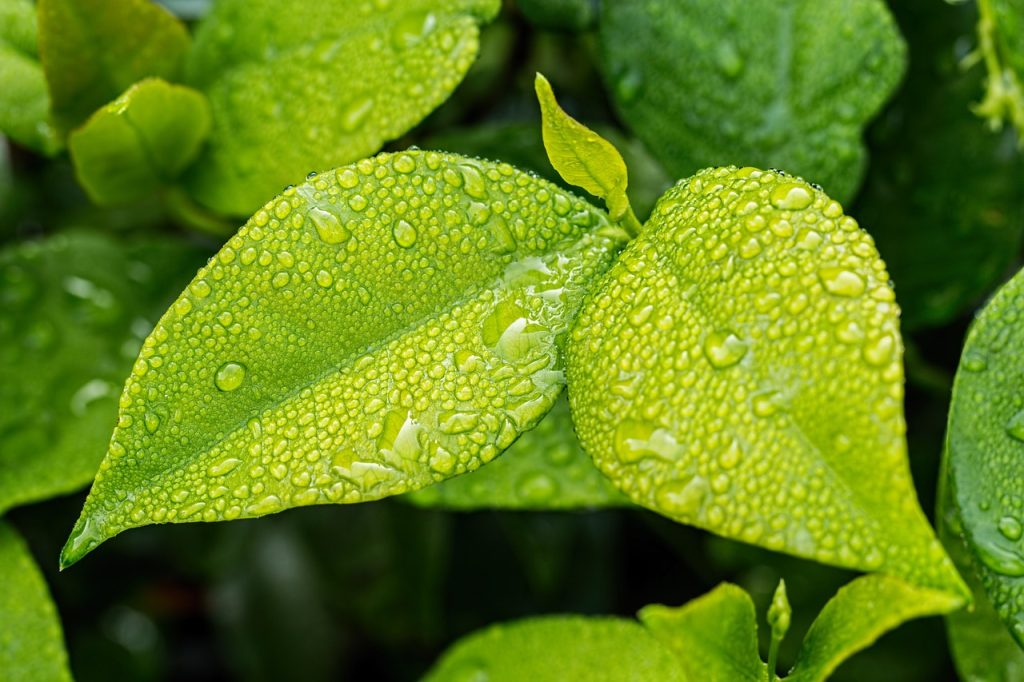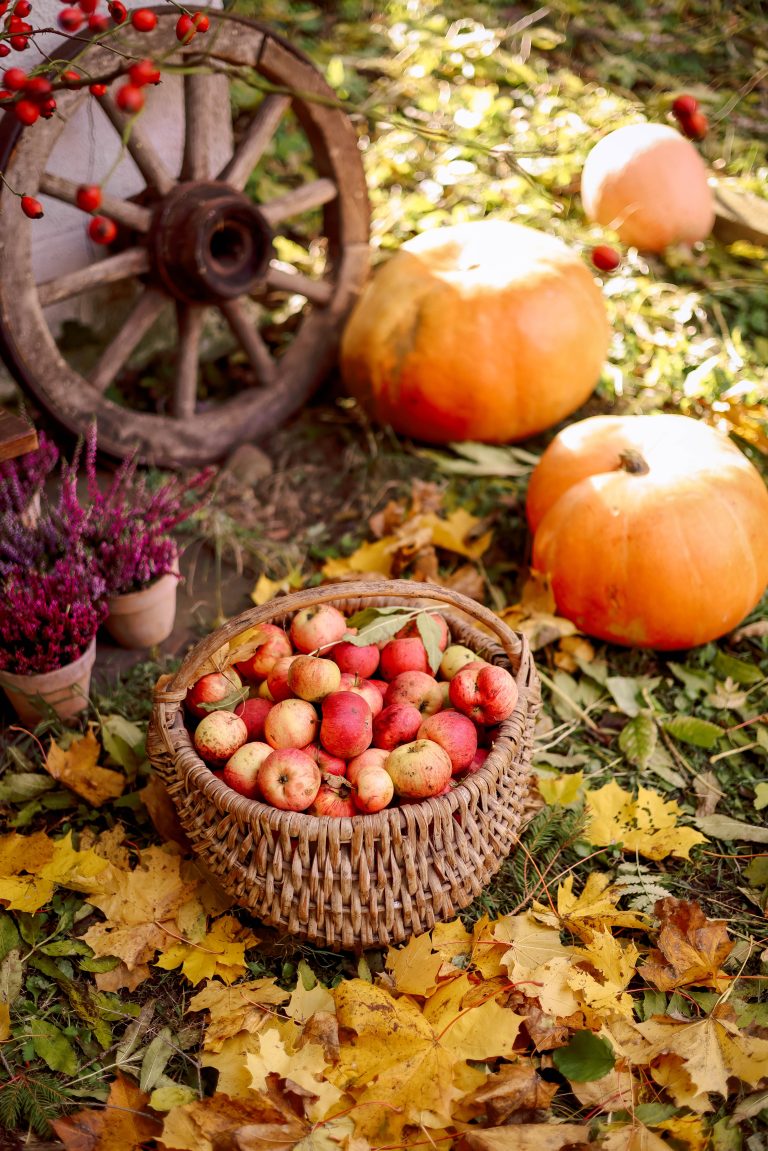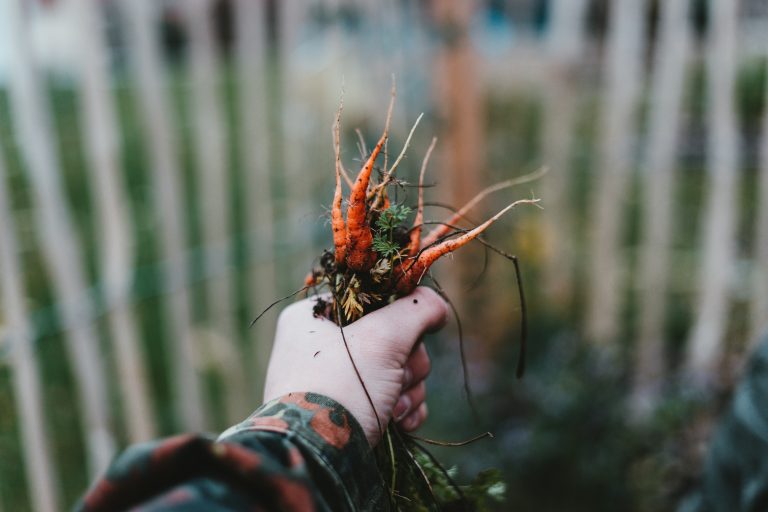If you’re yearning to transform your garden into a lush and thriving paradise, look no further! This article provides invaluable tips on how you can enhance the quality of soil in your garden. From understanding the importance of organic matter to implementing effective fertilization techniques, we’ve got you covered. Get ready to dig in, figuratively speaking, and unlock the secrets to a healthier and more bountiful garden.
Table of Contents
ToggleComposting
Choosing a composting method
When it comes to improving soil quality in your garden, composting is a fantastic method to consider. Composting is a natural process that decomposes organic materials into a nutrient-rich soil amendment that can greatly enhance the health and fertility of your soil. The first step in starting your composting journey is to choose the right composting method that suits your needs and available resources.
There are several composting methods to choose from, ranging from traditional backyard composting to vermicomposting and even aerobic composting using specialized equipment. Each method has its own advantages and requirements, so it’s essential to consider factors such as available space, time commitment, and the type of materials you have on hand when deciding which method to use.
Materials for composting
Once you’ve selected a composting method that works for you, the next step is gathering the right materials for your compost pile. Compost is made up of a combination of both “green” and “brown” materials, which provide a balanced mix of nitrogen-rich and carbon-rich ingredients, respectively. Green materials include things like fresh grass clippings, fruit and vegetable scraps, and coffee grounds, while brown materials consist of dry leaves, straw, and wood chips.
To ensure successful decomposition and the breakdown of organic materials, it’s important to maintain a good balance between green and brown materials in your compost pile. Aim for a ratio of roughly three parts brown materials to one part green materials to create an ideal environment for microorganisms to break down the organic matter.
Creating a compost pile
With your composting method chosen and materials gathered, it’s time to start creating your compost pile. The location of your compost pile is important, as it should be placed in a well-drained area that receives ample sunlight. Sunlight helps to accelerate the composting process by providing warmth and aiding in the breakdown of organic matter.
Begin by laying down a layer of brown materials as the base of your compost pile. This layer helps to promote airflow and drainage in the pile. Next, add a layer of green materials on top of the brown layer, followed by another layer of brown materials. Continue layering green and brown materials until your compost pile reaches a height of around three to four feet.
To activate the composting process, you can add a compost activator or starter, which are commercially available products that introduce beneficial microorganisms to kick-start decomposition. Alternatively, you can simply let nature take its course, as the microorganisms needed for composting are present in the environment and will naturally find their way into your pile.
Maintaining the compost pile
Maintaining your compost pile is key to ensuring its success. Turning or aerating the pile every few weeks helps to promote airflow and prevents the pile from becoming compacted. This turning process also helps to mix the organic materials, ensuring that they decompose evenly.
It’s important to keep your compost pile moist but not overly wet. Aim for a moisture level similar to that of a damp sponge. Regularly check the moisture level and add water as needed, particularly during dry periods. Additionally, covering your compost pile with a tarp or bin can help to retain moisture and prevent excessive drying out.
In terms of timing, the composting process can take anywhere from several months to a year, depending on factors such as temperature, moisture, and the size of your compost pile. Be patient and consistent in maintaining your compost pile, and you’ll be rewarded with nutrient-rich compost that can be added to your garden soil to promote its health and fertility.
Mulching
Benefits of mulching
Mulching is another effective technique for improving soil quality in your garden. Mulch is a layer of material that is spread over the surface of the soil to help regulate temperature, conserve moisture, suppress weed growth, and improve overall soil health.
One of the primary benefits of mulching is moisture retention. The layer of mulch acts as a protective barrier, preventing water from evaporating too quickly from the soil surface. This reduces the need for frequent watering and helps to keep your plants adequately hydrated, especially during hot summer months.
Mulching also plays a crucial role in weed control. By depriving weed seeds of sunlight and blocking their access to the soil, mulch helps to suppress weed growth. This minimizes competition for nutrients and water between weeds and your desired plants.
Furthermore, mulch acts as a natural insulator, regulating soil temperature by keeping it cooler in the summer and warmer in the winter. This temperature moderation helps to create a more favorable environment for beneficial soil organisms, such as earthworms and microorganisms, which contribute to soil fertility and overall plant health.
Types of mulch
There are various types of mulch to choose from, each with its own unique characteristics and benefits. Organic mulches, such as wood chips, straw, and compost, are made from natural materials and break down over time, enriching the soil with organic matter as they decompose.
Inorganic mulches, such as rocks, gravel, and plastic sheeting, do not break down and provide longer-lasting weed suppression. These types of mulches are particularly suitable for areas where you want a more decorative or low-maintenance appearance, such as around ornamental plants or in pathways.
When selecting a mulch type, consider the specific needs of your garden. For example, if you are looking to improve soil fertility, an organic mulch that breaks down over time and adds nutrients to the soil is a good choice. On the other hand, if weed control is your primary concern, an inorganic mulch that provides long-lasting suppression may be more suitable.
Applying mulch correctly
Proper application of mulch is essential to reap its full benefits. Start by clearing any existing weeds or debris from the area where you plan to apply mulch. This ensures that the mulch is in direct contact with the soil and provides maximum coverage.
Next, apply a layer of mulch that is approximately two to four inches thick. Avoid piling the mulch directly against the base of plants or tree trunks, as this can create a damp environment that promotes rot and disease. Instead, leave a small gap around the base of each plant to allow for air circulation and prevent moisture buildup.
Regularly check your mulch layer and replenish it as needed, as organic mulches will break down over time and may need to be topped up. It’s also a good idea to periodically fluff up the mulch to prevent compaction and promote airflow within the mulch layer.
By choosing the right type of mulch and applying it correctly, you can significantly improve the quality of your garden soil. Mulching not only helps to conserve moisture and suppress weeds but also enhances the overall health and productivity of your plants.
Cover Crops
Benefits of cover crops
Incorporating cover crops into your garden is an excellent way to improve soil quality and fertility. Cover crops, also known as green manure, are crops that are grown specifically to benefit the soil rather than for harvest. These crops play a vital role in preventing soil erosion, suppressing weeds, improving soil structure, and adding organic matter to the soil.
One of the primary benefits of cover crops is soil erosion control. When planted during fall or winter, cover crops help to protect the soil from erosion caused by rainfall, wind, or runoff. The dense root systems of cover crops bind the soil together, preventing it from washing away and reducing the risk of nutrient loss.
Another significant advantage of cover crops is weed suppression. By competing with weeds for light, nutrients, and water, cover crops effectively reduce weed growth, minimizing the need for herbicides and manual weed removal. This leads to healthier and more productive garden beds.
Cover crops also contribute to soil fertility and structure. As they grow, cover crops absorb and store nutrients from the soil, preventing them from leaching into groundwater. When the cover crops are later incorporated into the soil, these nutrients are released, enriching the soil and providing a natural source of fertilizer.
Selecting the right cover crops
The choice of cover crops depends on the specific needs of your garden and the time of year. Different cover crops offer unique benefits and thrive under varying soil and climate conditions. Some commonly used cover crops include winter rye, crimson clover, buckwheat, and hairy vetch.
For fall or winter cover cropping, options like winter rye, crimson clover, and hairy vetch are ideal. Winter rye is known for its extensive root system, which helps to prevent erosion and improve soil structure. Crimson clover and hairy vetch, on the other hand, add nitrogen to the soil through nitrogen fixation, thus replenishing this vital nutrient.
If you’re looking to cover crop during the summer, buckwheat is a popular choice. Buckwheat grows quickly, suppresses weeds effectively, and attracts beneficial insects such as pollinators. After its flowering period, buckwheat can be easily incorporated into the soil to add organic matter.
Before selecting cover crops, consider factors such as the climate, soil type, and available growing space. It’s also important to plan ahead and determine the timing of your cover crop planting based on the crop rotation schedule and desired planting dates for your main vegetable or flower beds.
Planting and managing cover crops
Planting cover crops involves preparing the soil, sowing the seeds, and providing the necessary care until the cover crops reach maturity. Start by clearing any plant debris or weeds from the area where you plan to sow the cover crop. Loosen the soil to a depth of a few inches using a garden fork or tiller.
Next, evenly broadcast the cover crop seeds over the prepared soil, ensuring thorough coverage. Depending on the specific cover crop, follow the recommended seeding rate provided on the seed packet or by local agricultural extension services.
After sowing the seeds, lightly rake or harrow the soil to cover the seeds with a thin layer of soil. This helps to protect the seeds from birds and ensures good seed-to-soil contact for germination. Apply a light irrigation or water the area gently to promote germination.
Throughout the cover crop growth period, it’s important to monitor and manage the crops. Adequate water is essential, especially during dry spells, to ensure proper development. Some cover crops may require additional fertilization, particularly if your soil lacks certain nutrients.
Before your main planting season, it’s time to terminate the cover crops and prepare the soil for planting. Depending on the cover crop used, termination methods can vary. Options include mowing or cutting the cover crop, allowing it to wilt and then incorporating it into the soil, or using a roller-crimper to flatten the cover crops for easy incorporation.
By incorporating cover crops into your garden practices, you’ll not only improve soil quality but also enjoy the added benefits of erosion control, weed suppression, and enhanced soil fertility. Cover cropping is a sustainable and natural approach to gardening that promotes long-term soil health and productivity.
Crop Rotation
Understanding crop rotation
Crop rotation is a time-tested technique used to improve soil quality and prevent the build-up of pests and diseases in the garden. The practice involves growing different plant families in a specific sequence, typically over a period of several years, in order to maximize soil fertility and minimize the risk of pests and diseases.
Different plant families have varying nutrient requirements and are susceptible to different pests and diseases. By rotating crops, you can disrupt the life cycles of pests and diseases, reduce the risk of nutrient imbalances, and minimize the need for chemical interventions.
Crop rotation also helps to prevent the depletion of specific nutrients in the soil. Certain plant families, such as the brassica family (including cabbage, broccoli, and kale), are heavy feeders that deplete specific nutrients from the soil. By rotating these crops with nitrogen-fixing legumes like beans or peas, you can replenish nitrogen levels naturally and maintain the overall fertility of the soil.
Planning a crop rotation schedule
To effectively implement crop rotation in your garden, careful planning and consideration are necessary. Start by mapping out your garden beds and identifying the different plant families you intend to grow. Familiarize yourself with the nutrient requirements, pest vulnerabilities, and disease susceptibilities of each plant family.
Divide your garden beds into different zones or sections, each representing a different crop rotation grouping. Ideally, a three- to four-year rotation schedule is recommended. This allows for optimal diversity and ensures that crops from the same family are not grown in consecutive years in the same bed.
When planning your crop rotation schedule, consider factors such as the size and shape of your garden beds, the length of growing seasons, and the specific needs of the plants you wish to grow. Take into account any existing plants or structures in your garden that may impact the layout and rotation sequence.
Implementing crop rotation in your garden
Once you have your crop rotation plan in place, it’s time to start implementing the rotation in your garden. Begin by clearing any existing plant residues or weeds from the bed, ensuring a clean start for the new crop.
Next, prepare the soil by adding any necessary amendments or fertilizers based on the specific needs of the upcoming crop. This may involve testing the soil to determine nutrient levels and pH, and making appropriate adjustments to ensure optimal growing conditions.
When planting, follow the recommended spacing and planting dates for each crop, as indicated on seed packets or nursery labels. Be mindful of any companion or antagonistic plants within the rotation grouping and adjust their placement accordingly to maximize the benefits of crop rotation.
Throughout the growing season, monitor the health and progress of your crops, and take appropriate actions to address any pest or disease issues that may arise. Regularly inspect the plants for signs of nutrient deficiencies or imbalances and make necessary amendments if needed.
At the end of the growing season, clear the bed of any remaining plant debris and incorporate it into the compost pile or dispose of it properly to prevent the spread of diseases or pests. Rotate the next crop according to your planned sequence, ensuring that the bed is appropriately prepared for the upcoming planting.
Crop rotation is a proactive gardening practice that not only promotes soil health but also reduces the reliance on chemical pesticides and fertilizers. With proper planning and implementation, you can enjoy more bountiful harvests and healthier plants while minimizing the risk of pests and diseases in your garden.
Adding Organic Matter
Benefits of organic matter
Adding organic matter to your garden soil is one of the most effective ways to improve its quality and fertility. Organic matter, such as compost, manure, and plant residues, provides numerous benefits to the soil and the plants that grow in it.
One of the key benefits of organic matter is its ability to enhance soil structure. When added to the soil, organic matter binds particles together, creating aggregates that improve soil porosity and drainage. This allows for better air circulation and root penetration, promoting healthy root development and nutrient uptake.
Organic matter also acts as a reservoir for water, both retaining moisture during dry periods and improving water infiltration when it rains. This helps to reduce water stress on plants and ensures a more consistent and adequate water supply for root systems.
Furthermore, organic matter is a valuable source of essential plant nutrients. As it breaks down, organic matter releases nutrients such as nitrogen, phosphorus, and potassium into the soil, providing a slow-release fertilizer that supports plant growth and development. It also improves cation exchange capacity (CEC), which enhances the soil’s ability to retain and exchange nutrients.
Sources of organic matter
There are various sources of organic matter that you can incorporate into your garden soil. One of the most readily available and beneficial sources is compost. Compost is made from decomposed organic materials such as kitchen scraps, yard waste, and plant residues. It is rich in nutrients and microbial activity, making it an excellent soil conditioner and fertilizer.
You can create your own compost by setting up a compost bin or pile in your backyard and regularly adding a balanced mix of green and brown materials. Alternatively, you can purchase compost from garden centers or local suppliers if you don’t have the space or resources to produce your own.
Other sources of organic matter include well-rotted manure, which is high in nutrients and adds valuable organic material to the soil. However, be cautious when using manure as it may contain weed seeds or pathogens. Make sure the manure has aged for a sufficient period and is properly composted before applying it to your garden.
Cover crops, as mentioned earlier, are also an excellent source of organic matter. When cover crops are terminated and incorporated into the soil, they add organic material and nutrients, enriching the soil and improving its structure.
Incorporating organic matter into the soil
To incorporate organic matter into your garden soil, start by clearing any existing weeds or debris from the area. Loosen the soil using a garden fork or tiller to a depth of at least six inches to create a suitable environment for root development.
Next, apply a layer of organic matter on top of the soil. For compost or well-rotted manure, a layer one to two inches thick is generally sufficient. If using plant residues or cover crops, chop them into smaller pieces before incorporating them into the soil to speed up decomposition.
After spreading the organic matter, use a garden rake or hoe to work it into the soil, aiming for a uniform distribution. Avoid mixing the organic matter too deeply, as this can disrupt the soil structure and damage beneficial soil organisms. Instead, focus on lightly incorporating the organic matter into the top few inches of soil.
Once the organic matter is incorporated, water the area thoroughly to promote microbial activity and decomposition. Depending on the planting season and specific needs of your plants, you can either proceed with direct seeding or transplanting, or allow the soil to rest and settle before planting.
By regularly adding organic matter to your garden soil, you’ll gradually improve its structure, nutrient content, and moisture-holding capacity. This natural and sustainable approach to soil improvement promotes long-term fertility and productivity, resulting in healthier and more abundant plant growth.
Testing Soil pH
Importance of soil pH
Soil pH is a critical factor that significantly impacts plant health and the availability of essential nutrients. pH is a measure of the acidity or alkalinity of the soil, with values below 7 indicating acidity and values above 7 indicating alkalinity. A pH of 7 is considered neutral.
The pH level affects the solubility and availability of nutrients in the soil. Different plant species have specific pH preferences, and maintaining the appropriate pH level for the plants you grow is crucial for optimal nutrient uptake.
Most plants prefer a slightly acidic to neutral pH range of 5.5 to 7.5. At this range, nutrients are readily available for absorption by plant roots. In contrast, if the soil pH is too acidic or alkaline, certain nutrients may become less available or even toxic to plants, leading to stunted growth, nutrient deficiencies, or other health issues.
Methods for testing soil pH
Testing the pH of your garden soil is relatively simple and can be done using different methods. The most common methods include using a soil pH testing kit, sending a soil sample to a professional testing laboratory, or utilizing an electronic pH meter.
Soil pH testing kits are readily available at garden centers and are an affordable and convenient option for home gardeners. These kits typically include test strips or a color indicator, along with instructions on how to measure and interpret the results. Simply follow the instructions provided, and you will obtain an estimate of your soil’s pH level.
Sending a soil sample to a professional testing laboratory is a more accurate and comprehensive way to determine soil pH. Many university extension services and agricultural laboratories offer soil testing services for a small fee. By collecting a soil sample from your garden and sending it to the laboratory, you will receive a detailed analysis including pH and other soil nutrient levels. This can be particularly helpful if you require more precise pH information or if you want to evaluate other aspects of your soil health.
Electronic pH meters provide a quick and precise measurement of soil pH. These handheld devices typically include a probe that is inserted into the soil, and the pH reading is displayed digitally. Electronic meters are a good option if you prefer a more high-tech and immediate approach to testing soil pH.
Regardless of the method you choose, it’s important to take multiple soil samples from different areas of your garden for a more representative analysis. Soil conditions can vary within your garden, so sampling from different locations will provide a more accurate picture of the overall pH levels.
Making pH adjustments
After testing your soil pH, you may discover that it is too acidic or alkaline for the plants you wish to grow. Fortunately, there are several ways to adjust pH and bring it into the desired range.
To raise soil pH and make it more alkaline, you can add materials such as agricultural lime, dolomite lime, or wood ash. These materials contain calcium and magnesium carbonate, which react with the soil to neutralize acidity and increase pH. Follow the recommended application rates provided on the product packaging or based on the recommendations from your soil test results.
Lowering soil pH to make it more acidic can be achieved by incorporating materials like sulfur, aluminum sulfate, or peat moss into the soil. These materials release hydrogen ions, which lower pH levels. Again, follow the recommended rates and guidelines for the specific product you are using.
It’s important to note that adjusting soil pH is a gradual process and may take time to have a noticeable effect. Regularly testing your soil pH and making incremental adjustments based on the test results will help you achieve and maintain the optimal pH range for your plants.
Amending with Fertilizers
Understanding soil nutrient requirements
Proper soil fertility is essential for healthy plant growth and bountiful harvests. Soil nutrients are classified into macronutrients and micronutrients, each playing a vital role in supporting plant development.
Macronutrients are required in larger quantities and include nitrogen (N), phosphorus (P), and potassium (K). Nitrogen is essential for leaf growth and overall plant vigor, phosphorus promotes root development and flowering, while potassium contributes to fruit and seed production and enhances disease resistance.
Micronutrients are needed in smaller quantities but are equally important for plant health. Examples of micronutrients include iron (Fe), manganese (Mn), zinc (Zn), and copper (Cu). These micronutrients are involved in various physiological processes, such as enzyme activity and chlorophyll production.
Understanding the specific nutrient requirements of the plants you grow is crucial for providing appropriate fertilization. Different plant species have varying nutrient needs, and over- or under-fertilization can negatively impact plant growth and development.
Types of fertilizers
Fertilizers come in various forms, including organic and synthetic options. Organic fertilizers are derived from natural sources, such as compost, manure, bone meal, and seaweed extracts. They provide a slow-release source of nutrients and improve soil structure and microbial activity.
Synthetic or inorganic fertilizers are manufactured and typically provide a more readily available and concentrated source of nutrients. They are often formulated to specific nutrient ratios and can be tailored to the specific needs of your plants. However, their use may contribute to nutrient imbalances and the potential for environmental pollution if overused.
When selecting a fertilizer, consider the nutrient requirements of your plants, the soil test results, and any additional amendments that may be needed based on the nutrient content of your soil. It’s important to read and follow the application rates and instructions provided on the fertilizer packaging to avoid over- or under-fertilization.
Applying fertilizers correctly
Applying fertilizers correctly is essential to maximize their effectiveness and minimize the risk of nutrient losses. There are two primary methods of fertilizer application: broadcast application and localized placement.
Broadcast application involves spreading the fertilizer evenly over the soil surface, ensuring uniform coverage. This method is suitable for large garden areas or when the nutrient requirements are similar across the entire garden. After spreading the fertilizer, gently incorporate it into the top few inches of soil using a garden rake or hoe.
Localized placement, also known as banding or trenching, involves applying the fertilizer directly to the root zone of individual plants or rows of plants. This method is particularly useful when the nutrient requirements of different plants vary or when specific plants show signs of nutrient deficiencies. Dig a narrow trench or hole near the plants, apply the fertilizer, and cover it with soil.
Regardless of the application method, it’s important to water the area thoroughly after fertilizing to help dissolve and distribute the nutrients. This promotes efficient uptake by plant roots and minimizes the risk of nutrient leaching.
To maintain proper nutrient balance and prevent over-fertilization, it’s important to monitor and adjust fertilization practices based on the specific needs of your plants and any changes indicated by periodic soil testing. By giving your plants the right nutrients at the right time, you’ll ensure their optimal growth and productivity.
Watering Techniques
Watering schedule and methods
Water is an essential component for plant growth, and proper watering techniques are crucial for maintaining healthy plants. Establishing a watering schedule and using appropriate methods help to ensure that plants receive the necessary moisture without promoting excessive water loss or waterlogging.
The frequency and amount of water needed depend on various factors, including the plant species, stage of growth, weather conditions, and soil type. Generally, plants should be watered when the top few inches of soil feel dry to the touch. The goal is to provide enough water to thoroughly moisten the root zone without saturating the soil.
How you water is just as important as when you water. The most common watering methods include overhead watering, drip irrigation, and soaker hoses. Each method has different advantages and considerations.
Overhead watering, such as using a watering can or sprinkler, is a simple and effective method for small gardens or when watering a variety of plants. However, it can promote the spread of diseases and be inefficient due to water loss through evaporation.
Drip irrigation is a more precise and water-efficient method that delivers water directly to the root zone of plants. It involves using a drip tape or a network of emitters that release water slowly and evenly. Drip irrigation can be automated and is particularly suitable for landscape beds or areas with specific watering requirements.
Soaker hoses are another effective way to deliver water directly to the root zone. These hoses release water through tiny pores along their length, providing a slow and even watering. Soaker hoses can be placed along the base of plants or buried beneath a layer of mulch to maximize water efficiency.
Conserving water in the garden
Conserving water in the garden not only helps to reduce water usage but also promotes environmental sustainability. There are several strategies you can employ to conserve water and minimize wastage.
Mulching plays a significant role in water conservation by reducing evaporation from the soil surface. Apply a layer of organic mulch around plants to help retain soil moisture and reduce the need for frequent watering.
Grouping plants with similar water needs together is another effective water conservation strategy. By creating watering zones based on the water requirements of your plants, you can avoid overwatering or underwatering certain areas. This is particularly useful for gardens with a mix of drought-tolerant and water-loving plants.
Regularly inspecting your garden for leaks, damaged irrigation systems, or other sources of water loss is important in water conservation. Fixing leaks and ensuring that irrigation systems are functioning properly helps to minimize wastage and ensures that plants receive the water they need.
Improving water retention in the soil
Improving water retention in the soil is vital to avoid water runoff and promote efficient water use by plants. Soil with good water retention holds moisture longer, reducing the frequency of watering and preventing water loss through drainage.
Adding organic matter, such as compost or well-rotted manure, to the soil significantly improves its water retention capacity. Organic matter acts like a sponge, absorbing and holding onto water, making it available to plant roots. Incorporating organic matter into the soil as discussed earlier helps to enhance water retention over time.
Amending heavy clay soils with materials like sand, perlite, or vermiculite can help improve their drainage and water-holding capacity. These materials create pore spaces in the soil, allowing excess water to drain while retaining enough moisture for plant roots.
Another technique for improving water retention is implementing watering techniques that promote deep root growth. Deep watering encourages plant roots to grow deeper into the soil, where they can access moisture stored in lower soil layers. To achieve deep watering, water slowly and deeply, allowing the water to soak into the soil rather than pooling on the surface.
By employing water conservation strategies and improving water retention in the soil, you can effectively manage water usage in your garden and ensure that your plants receive the necessary moisture for healthy growth.
Controlling Soil Erosion
Causes of soil erosion
Soil erosion is a natural process that can be exacerbated by human activities such as improper land management and gardening practices. Understanding the causes of soil erosion is crucial for implementing effective erosion control measures in your garden.
One of the primary causes of soil erosion is water. Heavy rainfall and improper drainage can lead to runoff, causing topsoil to be carried away, leaving behind exposed subsoil that is less fertile and prone to compaction. Improper grading and the presence of steep slopes can also contribute to water erosion.
Wind erosion is another significant cause of soil erosion, particularly in areas with loose, sandy soils or exposed soil surfaces. Strong winds can blow away fine soil particles, removing valuable topsoil and leaving behind barren and infertile land.
Soil compaction, caused by heavy machinery, foot traffic, or improper cultivation techniques, can exacerbate erosion by reducing soil permeability and increasing surface runoff. Compacted soils are more likely to erode, as they are less able to absorb and hold water.
Preventing soil erosion in the garden
Preventing soil erosion is essential for maintaining healthy soil and preserving the productivity of your garden. Implementing erosion control measures can help minimize the impact of erosion on your garden soil.
One of the most effective methods for preventing soil erosion is to establish vegetative cover. Planting groundcover plants, grasses, shrubs, or trees helps to stabilize the soil and reduce the impact of raindrops and wind on the soil surface. The roots of these plants bind the soil together, preventing it from being washed or blown away.
Contouring, or contour plowing, is another technique that aids in erosion control. It involves plowing across the slope, following the contour lines of the land. This method helps to slow down water flow and prevent the rapid runoff that leads to erosion. Contouring is particularly beneficial on slopes and hillsides, where water erosion is more likely to occur.
Utilizing erosion control structures can also be effective in preventing soil erosion. Techniques such as terracing or building retaining walls help to minimize the impact of heavy rainfall or runoff on gardens located on steep slopes. These structures create level platforms that slow down water movement and allow it to infiltrate the soil gradually.
Erosion control techniques
In addition to the preventive measures mentioned earlier, there are several erosion control techniques that can be implemented to address existing erosion issues or areas prone to erosion.
Covering bare soil with mulch is an effective way to prevent erosion by protecting the soil surface from the impact of heavy raindrops and wind. Mulch helps to slow down water flow, reduce runoff, and promote water infiltration. It also acts as a physical barrier, preventing the detachment and movement of soil particles.
Installing erosion control fabrics or geotextiles is another technique that helps stabilize soil and prevent erosion. These materials are permeable, allowing water through while holding the soil in place. They can be used in areas where erosion is particularly severe, such as steep slopes or highly trafficked regions of the garden.
Creating swales, or shallow trenches, is a method commonly used to capture and divert excess water away from vulnerable areas. By strategically placing swales in areas prone to erosion, such as at the base of slopes or along pathways, you can intercept runoff and allow the water to infiltrate the soil slowly.
Strategic planting of windbreaks or shelterbelts consisting of trees or shrubs helps to reduce wind erosion. These plantings serve as a barrier, breaking up wind currents and preventing the movement of soil particles. When selecting windbreak plants, consider their height, density, and ability to withstand windy conditions.
By implementing erosion control measures and adopting proper land management practices, you can effectively prevent soil erosion and maintain the health and productivity of your garden. A well-maintained and erosion-free garden ensures that valuable topsoil, nutrients, and plantings are preserved for long-term success.
Reducing Soil Compaction
Causes of soil compaction
Soil compaction occurs when soil particles are pressed together, reducing pore spaces and impeding the movement of air, water, and nutrients within the soil. Several factors contribute to soil compaction, including both natural processes and human activities.
Heavy machinery, such as tractors or construction equipment, can cause significant soil compaction when operated on wet or unsuitable soil conditions. The weight and pressure exerted by these machines compact the soil, resulting in reduced soil porosity and increased surface runoff.
Frequent foot traffic or improper cultivation practices, such as over-tilling or excessive rototilling, can also compact the soil. Walking or working on wet soil increases the likelihood of compaction, as the soil particles are more easily compressed and compacted when saturated with water.
In natural settings, certain soil types, such as clay soils, are more prone to compaction due to their fine particle size and ability to retain water. Additionally, repeated freeze-thaw cycles can cause compaction in regions with fluctuating temperatures, as the cycle of freezing and thawing displaces soil particles and creates compacted layers.
Preventing soil compaction
Preventing soil compaction is crucial for maintaining healthy and productive garden soil. By implementing proper cultivation and management practices, you can minimize soil compaction and promote optimal soil structure.
Avoid working on wet soils, as they are more susceptible to compaction. Test the moisture level of the soil by gently squeezing a handful of soil, and only proceed with cultivation or planting when the soil crumbles apart easily rather than forming a muddy ball. Working on dry or slightly moist soil allows it to be more resilient and less prone to compaction.
Minimize foot traffic or use designated paths or walkways to prevent unnecessary soil compaction. Creating clear access routes and avoiding unnecessary traffic on garden beds reduces soil disturbance and compaction in areas where plants are growing.
Utilize proper cultivation techniques that minimize soil disturbance. Avoid over-tilling or excessive rototilling, as this can disrupt soil structure and create compacted layers. Instead, adopt practices such as minimal tillage or no-till gardening, which preserve the natural structure and integrity of the soil.
Loosening compacted soil
Incorporating organic matter into the soil is one of the most effective ways to loosen compacted soil and improve its structure. Organic matter, such as compost or well-rotted manure, acts as a soil conditioner, creating pore spaces and promoting aeration and drainage. Regularly adding organic matter to the soil helps to restore its natural structure and reduce compaction.
For heavily compacted soils, mechanical intervention may be necessary to alleviate compaction. Tools such as broadforks or garden forks can be used to manually loosen compacted soil. Insert the fork into the soil, then gently rock it back and forth to break up compacted layers. Repeat this process throughout the affected area, working in a systematic pattern to ensure even loosening.
Another method to improve soil structure and reduce compaction is by using cover crops. Planting cover crops with deep root systems, such as annual ryegrass or daikon radish, can help break up compacted layers in the soil. These cover crops penetrate deep into the soil, creating channels that allow for better water infiltration and root growth.
By adopting proper cultivation practices, minimizing soil disturbance, and incorporating organic matter into the soil, you can successfully reduce soil compaction and create a favorable environment for healthy plant growth. With improved soil structure, water and nutrient movement within the soil is enhanced, ensuring optimal plant health and productivity.









